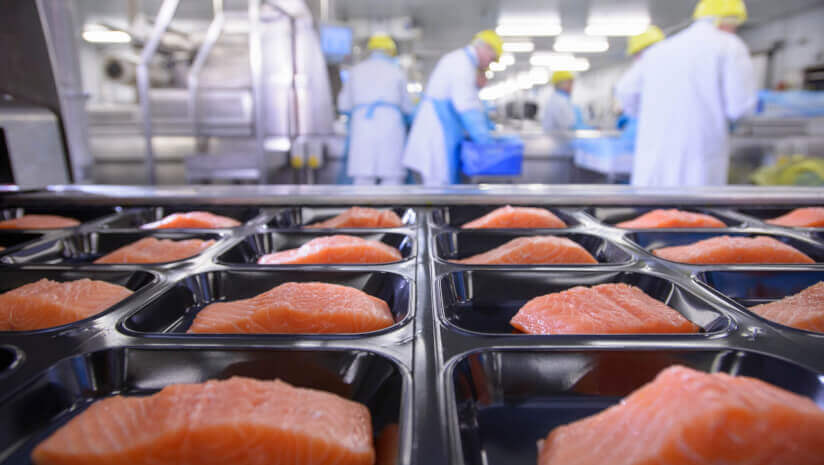Umami Bioworks introduces its hybrid caviar as an eco-friendly alternative to its natural counterpart, with a particular focus on business-to-business (B2B) partnerships, explained Umami’s CEO, Mihir Pershad.
Umami’s hybrid caviar incorporates plant-based ingredients, like seaweeds and natural binders, for texture and flavor, similar to premium caviar’s buttery and rich mouthfeel, he said. However, the company plans to reduce the use of plant-based ingredients as cellular agriculture technology advances, Pershad added.
What’s the difference between hybrid and blended meat?
Hybrid meats are a mixture of cultivated meat and plant-based ingredients, while blended meat contains animal meat and plant-based proteins.
“Umami’s cultivated technology eliminates the need to harvest wild sturgeon entirely, preserving aquatic biodiversity and reducing the environmental footprint associated with traditional methods. By using advanced biomanufacturing techniques, we minimize water usage, greenhouse gas emissions and habitat disruption, offering a more ethical and eco-conscious alternative,” Pershad said.
B2B partnerships offer market viability and increased adoption for cultivated products
Cultivated meat companies are reaching consumers through tastings and restaurant partnerships; however, commercialization remains an uphill challenge due to scalability and funding limitations.
Shifting focus to B2B partnerships with meat producers, rather than solely on branding and direct-to-consumer efforts, may open new revenue opportunities for the industry – a topic experts explored during Tufts University’s Cellular Agriculture Day last month.
Companies developing cultivated meat technology like Umami, Blue Nalu (cultivated blue fin tuna) and Forsea Foods (cultivated eel) follow a B2B model, partnering with seafood suppliers and distributors.
Have you registered for Future Food-Tech?
Join us at Future Food-Tech in San Francisco March 12-14 for the panel Evolving Strategies in Cell Cultivation to Face Industry Headwinds, where experts will explore breakthroughs in scaling, B2B models and navigating regulatory challenges. View the full agenda here and register here .
Speakers:
Robert E. Jones, VP, Global Public Affairs, MOSA MEAT
Bill Aimutis, Co-Director & Chief Operating Officer, BEZOS CENTER FOR SUSTAINABLE PROTEIN
Owen Ensor, CEO, MEATLY
Gregory Jaffe, Senior Advisor, Office of the Secretary, USDA
Session Chair: Deniz Ataman, Deputy Editor, FOOD NAVIGATOR-USA
“Our approach to market is B2B-focused. We will be partnering with chefs, premium food retailers and visionary brands to co-create customized culinary applications that bring cultivated caviar to consumers in exciting and innovative ways,” Pershad said.
The Singapore-based Umami Bioworks continues to grow its market presence across Asia, including the South Korea and India, the United Kingdom and in the US where the company launched cultivated fish for cat food.
“Our goal is to introduce the product in regions where cultivated food is gaining acceptance, starting with locations where the infrastructure and appetite for sustainable luxury products are already well-established,” Pershad said.
Caviar market continues to rise, driven by younger generations’ interest in sustainable, premium foods
While caviar’s price depends on the species, with sturgeon caviar as the most expensive, the global market is growing with revenue expected to increase from $4.85 million in 2025 to $9.63 billion by 2034 with a compound annual growth rate of 7.91% in the same period, according to Precedence Research.
As cultivated meat’s landscape continues to advance with technological breakthroughs and partnerships with meat companies, cultured meat’s value also is expected to increase globally with projected revenue growth from $1.69 billion in 2024 to $5.38 billion in 2034 with a CAGR of 17.15%, per data from Verified Market Research.
Younger generations interested in exploring sustainable and premium products are driving cultivated caviar’s growth, according to Pershad.
Gen Z and Millennials “are drawn to brands that offer transparency and demonstrate a commitment to addressing issues like climate change and ethical farming practices,” he explained.
“Overall, this demographic seeks luxury and indulgence, appreciates culinary creativity and experiences, and values sustainability - making cultivated caviar an ideal fit as an indulgence that blends tradition with conscious luxury,” he added.




